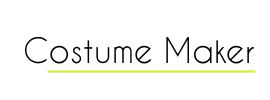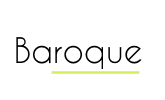 Andrew
in a military uniform of the later part of the decade, wearing the
long loose coat. His sleeves are 3/4 in contrast to the officer, whose
sleeve is shorter to be able to show of he finery of the shirt. Andrew
in a military uniform of the later part of the decade, wearing the
long loose coat. His sleeves are 3/4 in contrast to the officer, whose
sleeve is shorter to be able to show of he finery of the shirt. |
 Ben
in a suit copying the style of the later decade, from around 1666
onwards. Wearing baggy breeches which are closed at the knee and the
short waistcoat underneath the new long loosely shaped coat. He chose
to wear his cravat in a loose bow, edged with lace. Ben
in a suit copying the style of the later decade, from around 1666
onwards. Wearing baggy breeches which are closed at the knee and the
short waistcoat underneath the new long loosely shaped coat. He chose
to wear his cravat in a loose bow, edged with lace. |
 A
close-up of the baldrick with small sword in it. A soldier had a so-called
hanger, but an officer and a gentleman wore the finer smallsword,
which was just now starting to take over from the rapier of the first
half of the 17th c. The baldrick is covered with velvet and edged
with a gold brush fringe. A
close-up of the baldrick with small sword in it. A soldier had a so-called
hanger, but an officer and a gentleman wore the finer smallsword,
which was just now starting to take over from the rapier of the first
half of the 17th c. The baldrick is covered with velvet and edged
with a gold brush fringe. |
 Breeches
laid out, their fullness can be seen well. They are made from fine
worsted and lined with linen. Breeches
laid out, their fullness can be seen well. They are made from fine
worsted and lined with linen. |
 The
coat and the waistcoat underneath. The lining is a scarlet silk and
gold lace as well as silk ribbons adorn the sleeves. There are over
40 buttonholes on the coat, but in period there would have been even
more. The
coat and the waistcoat underneath. The lining is a scarlet silk and
gold lace as well as silk ribbons adorn the sleeves. There are over
40 buttonholes on the coat, but in period there would have been even
more. |
 Military
arrangement with soldier's coat, buff leather baldrick, hanger, pewter
plate and cutlery and the regimental drum. Military
arrangement with soldier's coat, buff leather baldrick, hanger, pewter
plate and cutlery and the regimental drum. |
 Close-ups
of the small sword, which is very plain compared to many period examples. Close-ups
of the small sword, which is very plain compared to many period examples. |
 The
grip is decorated with a dark blue silk thread twisted with a fine
silver wire and then wound around the wooden core. The
grip is decorated with a dark blue silk thread twisted with a fine
silver wire and then wound around the wooden core. |
 The
blade is not yet diamond shaped, that occurs only after 1700. The
blade is not yet diamond shaped, that occurs only after 1700. |
 Here
he is, Lord Brompton in all his finery at Vaux-le-Vicomte in the
beautiful sunshine. Here
he is, Lord Brompton in all his finery at Vaux-le-Vicomte in the
beautiful sunshine. |









